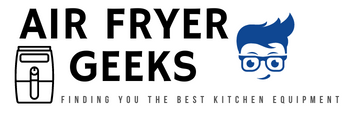Pressure Cookers
Get perfectly cooked meals in a fraction of the time with our selection of the best pressure cookers. We have selected a variety of sizes and styles, including electric and stovetop options. The pressure cookers we have selected are perfect for busy home cooks, as they allow you to cook a wide range of dishes, from soups and stews to grains and beans, quickly and easily. Shop now and discover the convenience and versatility of pressure cooking.
These are the top finds of pressure cookers and pressure cooker accessories we have found on Amazon for you.
Showing 1–12 of 135 results
What is a Pressure Cooker
A pressure cooker is a type of cooking pot that uses pressurized steam to cook food faster than traditional methods. It consists of a pot with a tightly fitting lid that seals in steam, which builds up pressure inside the pot. The increased pressure allows the pot to reach higher temperatures, which in turn cooks the food more quickly. Pressure cookers are particularly useful for cooking tough cuts of meat and other foods that typically take a long time to cook, such as beans and grains. They can also be used to make soups, stews, and other dishes that require a longer cooking time. Pressure cookers are known for their speed and efficiency, as they can often cook food in a fraction of the time it would take using other cooking methods.
What are the benefits of a Pressure Cooker
There are several benefits to using a pressure cooker:
- Speed: One of the biggest benefits of a pressure cooker is that it cooks food much faster than traditional cooking methods. This is because the increased pressure inside the pot allows it to reach higher temperatures, which speeds up the cooking process.
- Energy efficiency: Because pressure cookers cook food faster, they use less energy than other cooking methods. This can be a significant advantage if you’re looking to save on your energy bills or reduce your carbon footprint.
- Nutritional value: Pressure cookers can help to retain the nutritional value of foods better than other cooking methods. This is because the shorter cooking time means that fewer nutrients are lost during the cooking process.
- Versatility: Pressure cookers are versatile and can be used to cook a wide range of dishes, from soups and stews to grains and beans. They can also be used to cook tough cuts of meat, which become tender and flavorful when cooked under pressure.
- Easy to use: Many modern pressure cookers are designed with the home cook in mind and are easy to use. They often have multiple cooking settings and automatic pressure release options, making them user-friendly and convenient.
How to use a Pressure Cooker
Here are the basic steps for using a pressure cooker:
- Prepare the ingredients: Begin by preparing your ingredients and placing them inside the pressure cooker pot. Make sure to follow the recipe’s instructions for adding liquids and any additional ingredients, such as spices or herbs.
- Close and seal the lid: Make sure the pressure cooker lid is securely in place and that all of the seals are properly tightened.
- Select the cooking time and pressure: Refer to the recipe you’re following or consult the pressure cooker’s manual to determine the appropriate cooking time and pressure setting. Many pressure cookers have multiple cooking settings, so choose the one that’s appropriate for the type of food you’re cooking.
- Bring the pressure cooker to pressure: Place the pressure cooker on the stovetop and turn the heat to high. Once the pressure cooker reaches the desired pressure, the pressure valve will start to whistle, indicating that it has reached the correct pressure level.
- Reduce the heat: Once the pressure cooker has reached pressure, reduce the heat to maintain the desired pressure level. The pressure cooker will continue to cook the food according to the time and pressure setting you selected.
- Release the pressure: When the cooking time is up, you’ll need to release the pressure before you can open the lid. Some pressure cookers have an automatic pressure release feature, while others will require you to manually release the pressure by turning the pressure valve. Consult the manual for specific instructions.
- Serve and enjoy: Once the pressure has been released, you can carefully open the lid and serve the cooked food. Enjoy your perfectly cooked, flavorful meal!












